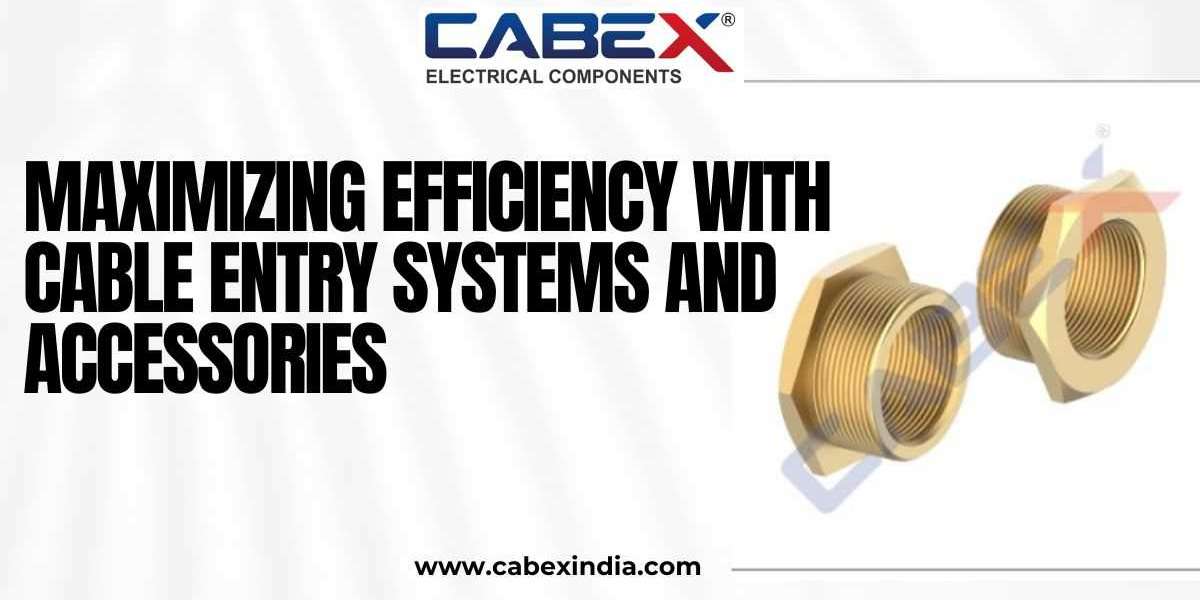Cable Entry Systems Accessories: Streamlining Electrical Installations
Efficient cable management is essential in any electrical or industrial setup, where multiple cables need to be securely organized, protected, and routed. This is where Cable Entry Systems and Accessories come into play. These systems allow cables to pass through enclosures, panels, and machines while maintaining a high level of protection against environmental factors like dust, moisture, and mechanical stress.
In this post, we’ll explore the importance of cable entry systems, the available types, and the various accessories that enhance their functionality.
What are Cable Entry Systems?
Cable entry systems are designed to provide organized and secure entry points for cables into electrical enclosures, control panels, or equipment housings. They ensure that cables are not only neatly routed but also protected from external damage and strain. These systems are essential in maintaining the integrity of electrical installations in industries such as manufacturing, telecommunications, and energy.
Key Benefits of Cable Entry Systems
- Protection: Cable entry systems provide protection against dust, water, and other environmental hazards. Many of these systems have high IP (Ingress Protection) ratings to ensure they can withstand harsh conditions.
- Ease of Installation: These systems are designed to make installation quick and easy. They often feature pre-configured seals or modular designs, allowing for flexible cable routing and adjustments.
- Safety: By securely holding cables in place and offering strain relief, cable entry systems help prevent electrical faults, wear, and potential accidents.
- Efficiency: Proper cable management through these systems enhances the efficiency of electrical installations, reducing the need for costly repairs and downtime due to cable damage or mismanagement.
Types of Cable Entry Systems
- Cable Glands: As part of a cable entry system, cable glands secure individual cables as they enter enclosures. They provide strain relief and environmental sealing, protecting the internal components from moisture, dust, or other contaminants.
- Cable Entry Frames: These are modular systems that allow multiple cables to pass through a single entry point. Entry frames are ideal for applications where numerous cables need to be routed in an organized manner.
- Brush Strips: Brush strips are used for low-density cable entry points, providing a flexible barrier for cables while offering a level of protection against dust and other particles. They are often used in server cabinets and IT installations.
- Split Cable Entry Systems: These systems allow pre-terminated cables (cables with connectors already attached) to pass through enclosures without needing to cut and re-terminate them. The split design ensures ease of installation while maintaining a secure seal.
Cable Entry Accessories
In addition to cable entry systems, various accessories help to optimize the performance and functionality of the setup. Some common cable entry accessories include:
- Strain Relief Clamps: These clamps provide additional strain relief to cables, ensuring that the cable does not experience excessive stress at the entry point. This reduces the risk of electrical failure and cable damage over time.
- Sealing Plugs: Sealing plugs are used to fill unused entry points in a cable entry frame or panel, maintaining the integrity of the enclosure’s environmental protection.
- Cable Ties and Holders: Cable ties and holders help organize cables inside enclosures, preventing them from becoming tangled or creating clutter. They contribute to both aesthetic neatness and operational efficiency.
- Grommets: Cable grommets are rubber or plastic fittings that protect cables from sharp edges as they pass through holes or openings. They provide both a seal and mechanical protection, reducing wear and tear on cables.
- Blind Plates: These are used to cover unused cable entry openings, maintaining the enclosure's IP rating and protecting against environmental hazards.
Applications of Cable Entry Systems
- Manufacturing Plants: Cable entry systems are vital in large-scale industrial plants where machines and control panels require complex cabling.
- Telecommunications: Telecom infrastructure, including data centers, uses cable entry systems to manage large volumes of cables efficiently.
- Energy Sector: In renewable energy, oil, and gas sectors, cable entry systems ensure secure and protected installations in harsh environments.
- Automotive Industry: Cable entry systems are employed in vehicles to manage electrical wiring securely.
Conclusion
Cable entry systems and accessories are indispensable in creating organized, safe, and efficient electrical installations. Whether you're managing a few cables or hundreds, selecting the right system and accessories ensures longevity and optimal performance in any environment. By securing and protecting cables, these systems prevent costly damage and maintain high standards of safety and performance.








